From Scottish Castle to Modern Hospital: 1st in a Series of 3 Articles on the Royal Victoria
- February 22, 2021
There’s no escaping it, especially as we weather a global pandemic, health, hospitals and caring for the sick are on everyone’s lips. Located in the heart of the Mount Royal Heritage Site, the former Royal Victoria Hospital now serves as a COVID-19 isolation unit for homeless people, yet the future of this illustrious site, affectionately known as the Royal Vic, is far from certain.
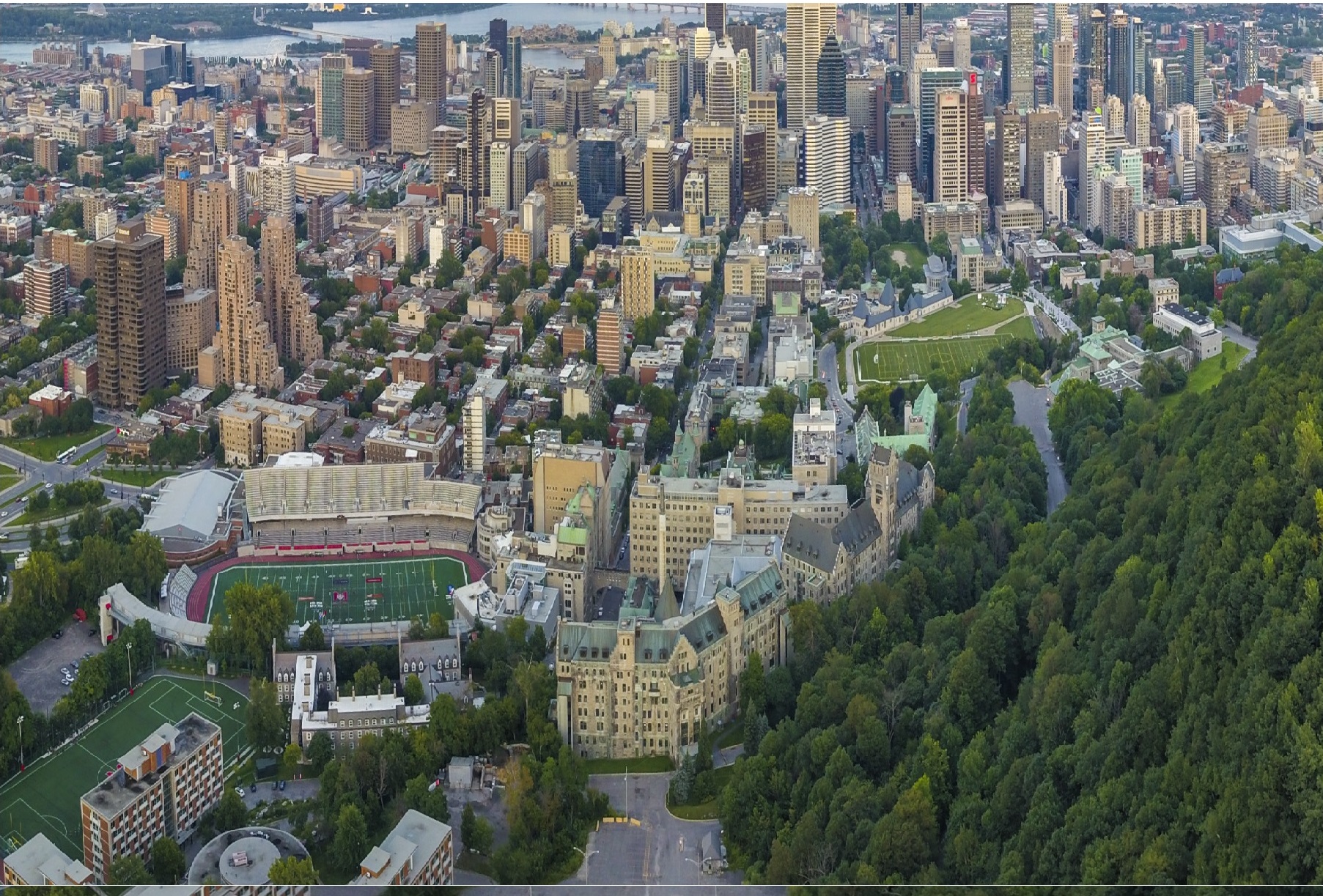
Aerial view of the Royal Victoria Hospital site
Photo : Pixup MTL
Today, several large institutional complexes on Mount Royal are undergoing important changes and their future is being discussed. In the same manner as the Hôtel-Dieu de Montréal, Shriners Hospital for Children and motherhouse of the Religious Hospitallers of Saint Joseph, the Royal Victoria faces this reality.
What does the future hold for this heritage site? Join us as we journey through time to gain a better understanding of the historical importance of the Royal Vic. To see the site for yourself, download this itinerary on your phone.
Mount Royal’s Rich Past
Ever since Montréal’s beginnings in the 17th century, Mount Royal has been a sought-after destination for vast institutions such as the Domaine des Messieurs-de-Saint-Sulpice. Religious communities, hospitals, schools and universities elected residence on the mountain and played a key role in the development of Montréal. Such sites with mostly public or community vocations defined Mount Royal and became part of the city’s identity.
The mountain remained largely undeveloped in the 18th century, with only a handful of wealthy landowners exploiting its land for agriculture, holiday and leisure purposes. It wasn’t until the 19th century that its appeal gained momentum. The southern-facing slopes then welcomed the stately homes of well-heeled merchants wishing to distance themselves from the river and the pollution generated by the city’s busy port.
It was at this time that Sir Hugh Allan, a Scottish shipping magnate, acquired the estate of Simon McTavish on Pine Avenue West in the Golden Square Mile. This prestigious neighbourhood was home to many Scottish owned mansions with impressive British-inspired gardens and landscaping.
It was on this site that Hugh Allan built a sumptuous villa overlooking the city that he named “Ravenscrag” (crow’s nest) in honour of a Scottish castle. Completed in 1863, its architectural style was inspired by an Italian Renaissance palazzo. From its imposing central tower, Allan was said to watch the activity of his ships in the harbour.
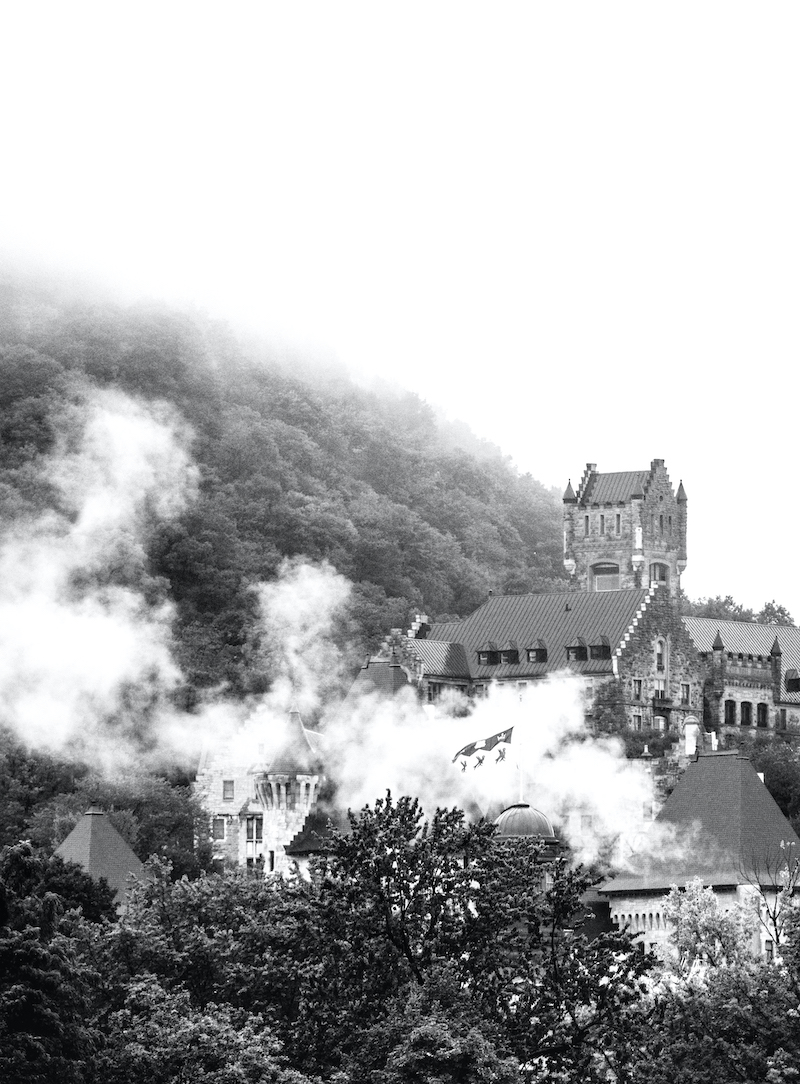
Ravenscrag
Photo: Cédric Tirilly
The Birth of a Prestigious Institution
Located next to the Ravenscrag mansion, the Royal Victoria Hospital was established in 1893 thanks to donations by two Scottish businessmen, Donald A. Smith and George Stephen, cousins and co-founders of the Canadian Pacific Railway. The hospital’s mission was to improve the well-being of Montrealers and to provide patients access to the restorative power of the mountain’s natural environment.

Old postcard featuring the Royal Victoria
The Industrial Revolution was in full swing at the time, and the local population faced pollution, lack of hygiene and epidemics. The hygienist movement advocated a return to nature as a means to counter the spread of diseases and insalubrious conditions. The sick were to be treated outside the city, far from the noise and filth, in hospitals featuring parks and trails where patients could enjoy fresh air. Mount Royal thus became a land of rest and healing.
An Architecture Fit for a Queen and a Mountain
An iconic element of the mountain’s landscape, the Royal Victoria is characterized by its architectural quality and its interplay of volumes that highlight the topography of Mount Royal. As a nod to the origin of the donors, its British-born architect, Henry Saxon Snell, chose the Scots Baronial style, which was very popular at the time. The picturesque Scottish-style architecture draws on the built environment of the Golden Mile in terms of the quality of its buildings and its layout.
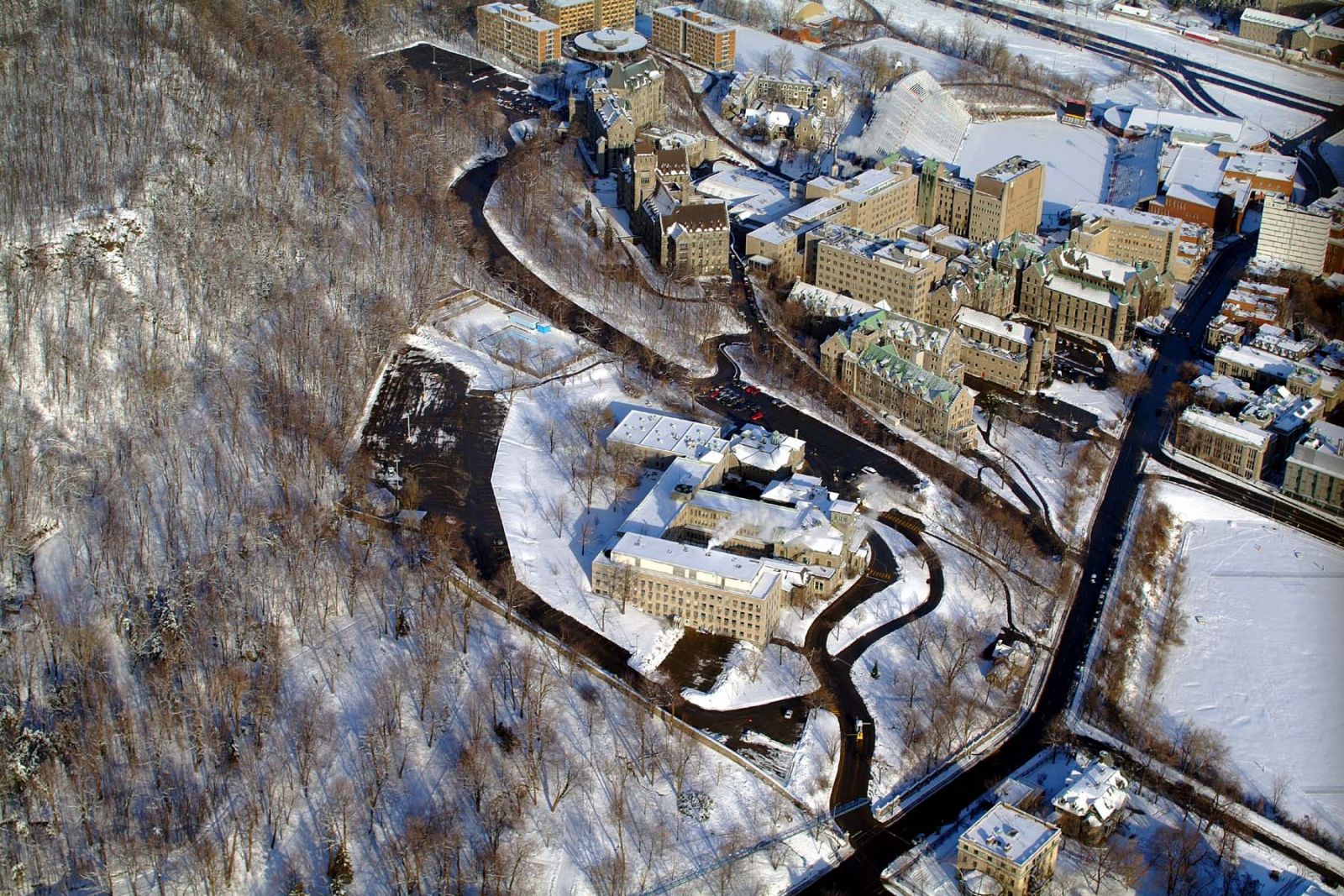
The picturesque Royal Victoria Hospital site spreads over 14 hectares and includes 17 pavilions.
Photo: Ville de Montréal, Airlmex
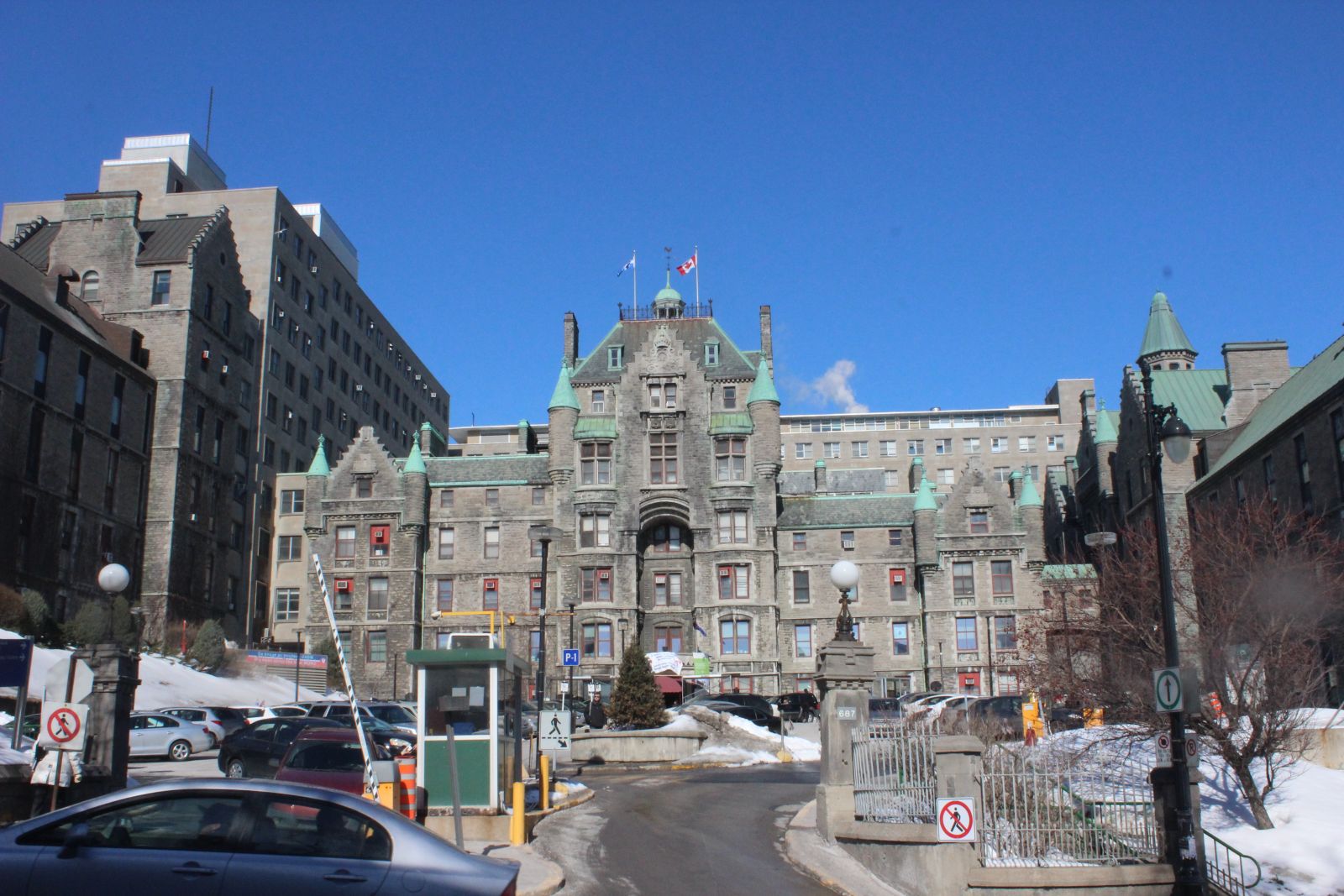
The main hospital features an H-shaped structure and central courtyard.
Architect Henry Saxon Snell opted for an ensemble of pavilions to better meet the healthcare challenges of the times.
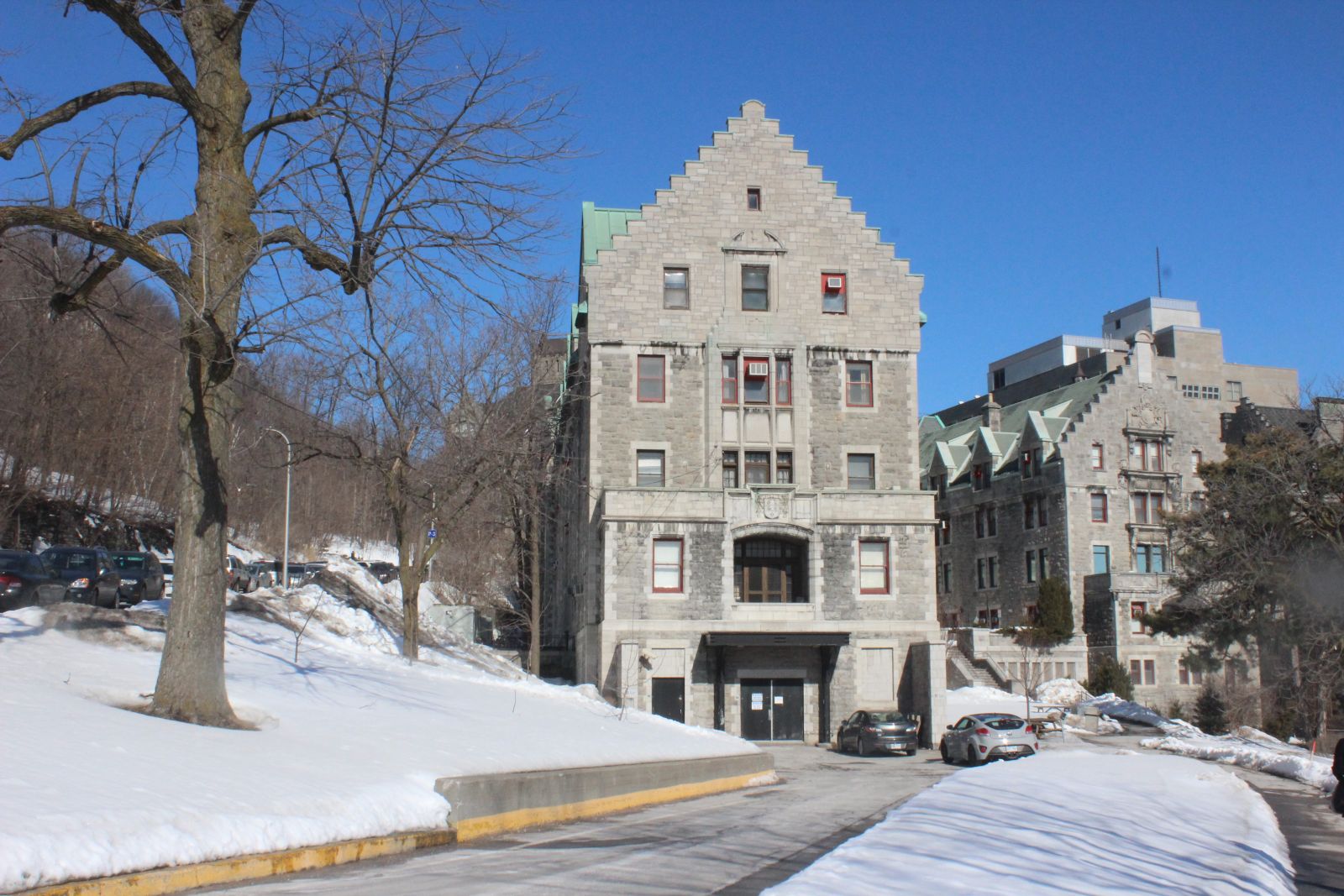
A later addition to the site, the Hersey Pavilion is angled away from the hospital and illustrates its vocation as a residence through its dormer windows and architectural references to the opulent homes of the era.
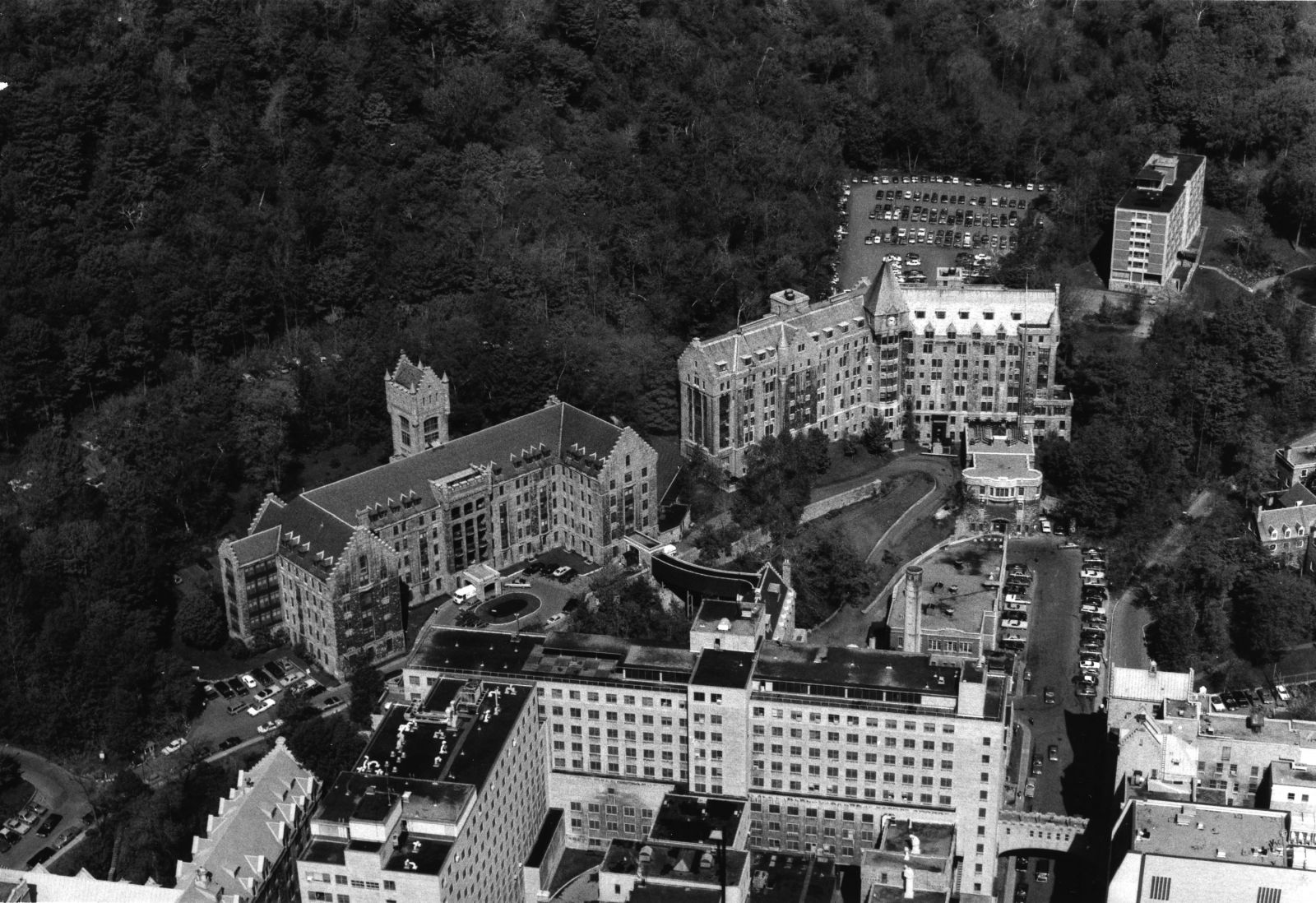
The site also showcases the monumental architecture of the Women’s Pavilion (upper v-shaped pavilion with clock) and Ross Memorial Pavilion (u-shaped pavilion with tower, next to forest) referencing the grand Canadian Pacific hotels of the period.
Photo: City of Montréal, Airlmex
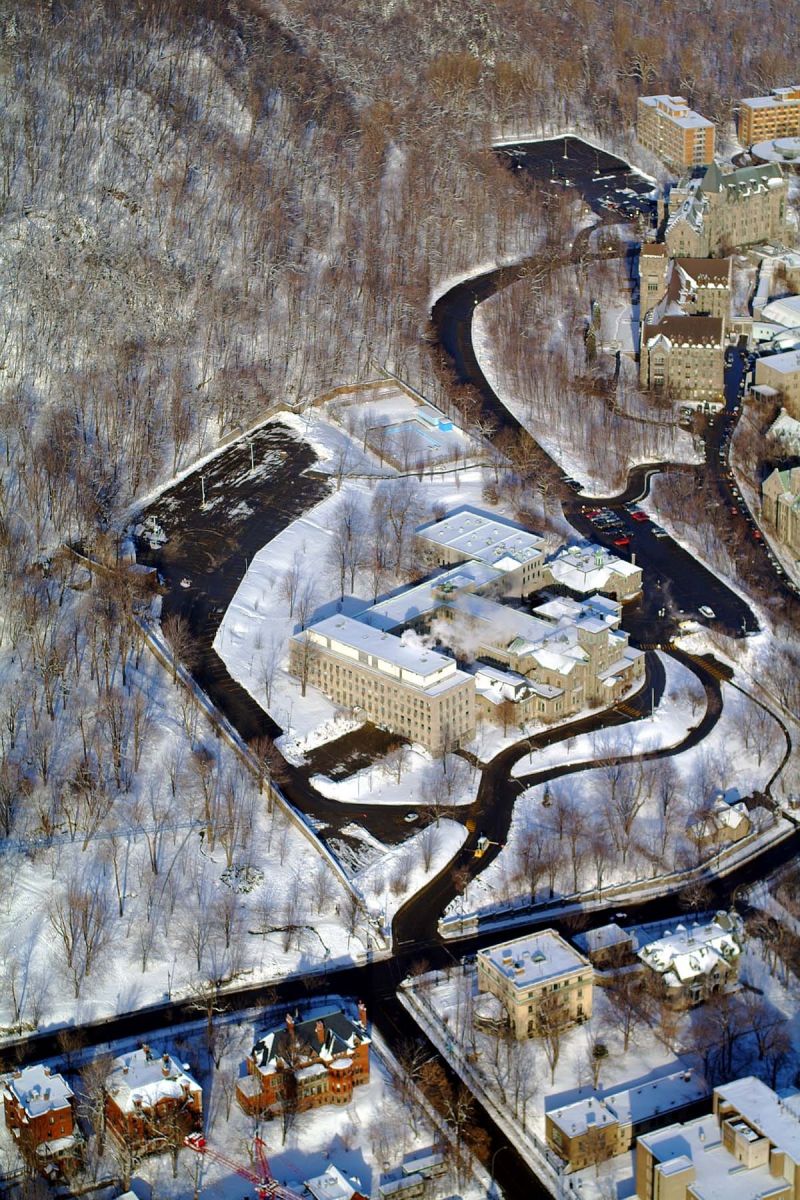
Aerial view of the Allan Memorial Institute. In 1940, Sir Montagu Allan, son of Hugh Allan, donated the Ravenscrag to the Royal Victoria Hospital, which later became the Allan Memorial Institute, a department of psychiatry at the McGill University Health Centre.
Photo: City of Montréal, Airlmex
The Royal Victoria bears witness to Victorian architecture and its profound influence on the identity of Montréal. Its successive expansions and mountainside location make it a prominent complex offering exceptional views of the city.
Modern-Day Challenges
As of 1945, the hospital changed to accommodate its healthcare functions to the detriment of its architectural and landscape values. Urban densification and the need for parking eliminated the gardens and green spaces. Today, only a few patches of woodland remain in the steep areas.
In more recent history, as part of the effort to centralize medical services in Montréal, the Royal Victoria’s health service functions were moved to the McGill University Health Center (MUHC) on the site of the former Glen rail yards, leaving it essentially abandoned since 2015. McGill University has since proposed a plan to integrate a portion of the site into its campus. This begs the question, what will happen to the former Royal Victoria Hospital?
In 2018, the Quebec government entrusted the Société québécoise des infrastructures (SQI) with a mandate to find a new purpose for the site with McGill’s project at its heart. This repurposing offers exceptional opportunities to imagine and carry out projects featuring the best practices in community and city development, while adapting them to the unique context of a protected heritage site. The result will be submitted to a public consultation in the spring of 2021.
Les amis de la montagne will make sure to have a front-row seat in the decision-making process!
Don't miss the second instalment of this series in whch we will explore the close ties between the Royal Victoria and the mountain.
